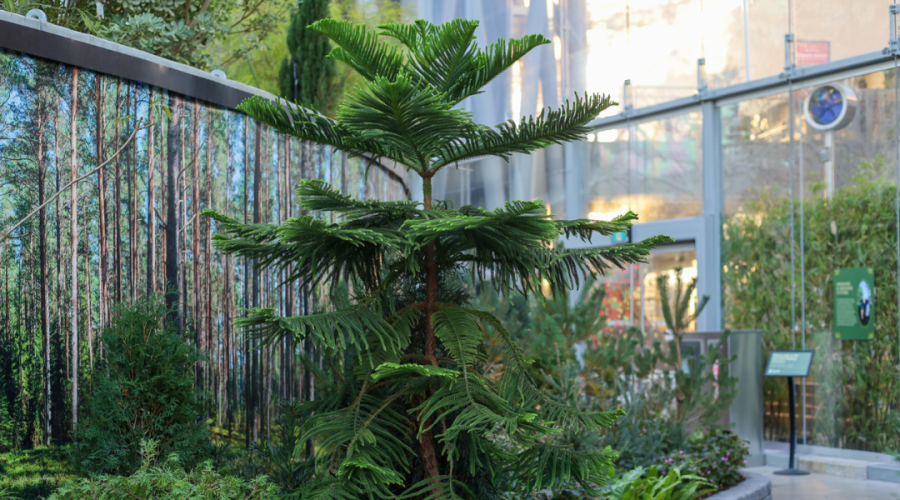Lead Gardener Euguenia Druyet Zoubareva shares about the sacred ceiba tree located in the Hartley and Heather Richardson Tropical Biome.
My absolute favourite spot at The Leaf is in the Tropical Biome where three sacred trees are gathered. The sacred fig (Ficus religiosa), the banyan (Ficus benghalensis) and in the centre is my favourite tree here at The Leaf, the Ceiba pentandra, or kapok tree.
Ceiba means boat in the Caribe language. The first peoples in the Caribbean basin used to create a huge single-piece canoe carved out of the trunk of the kapok tree. These canoes could fit 30 to 40 people! This is where the genus name of the plant comes from.
This tree has deep spiritual meaning for many cultures in Central and South America. Mayans believe that four ceibas hold the universe, one in the north, east, south, and west. The Tikunas people in the Amazon believe that this tree is the tree of life, and the Amazon was created when the first giant ceiba tree fell to create the Amazon River and its affluents.


I am from Cuba, and there the ceiba is also very sacred for the Afro-Cuban community. Generally, in Cuba, it is revered as magical, and the trees should never be cut down. If you ask to a Cuban to cut a Ceiba tree they will say, “No, I won’t cut it down just in case something happens”. Even if people are not religious or don't believe, they still never harm the ceiba.
It is said that both the first religious ceremony and first council meeting for the city of Havana, Cuba took place under the shade of a ceiba tree on November 16, 1519.
Biologically, the ceiba is very adaptable to the space it is growing in. For instance, in a tightly packed rainforest, it will grow very tall, up to 70 metres, high above the canopy. If the tree is growing in a more open area, such as the savannah or semi-deciduous forest, then it will grow wider, with a canopy of 50 metres in diameter, with a height of around 20 or 30 metres. The massive trunk can grow to five to eight feet in diameter.
The tree has a broad, flat crown of horizontal branches with leaves and white to pink flowers that are produced before the leaves appear during the dry season in areas with marked dry-rainy seasons.
The ceiba produces fruit that contains many seeds surrounded by a dense mat of cotton-like fibres called ‘kapok’. This is how the tree got its common name.
The fibres are almost pure cellulose and can be harvested when the fruits ripen. The fibres are very buoyant, and commonly used in life preservers or safety equipment. Kapok is also used as stuffing for pillows, mattresses, and upholstery.
Come see the kapok tree in the Tropical Biome at The Leaf. We are so excited to watch it grow!






